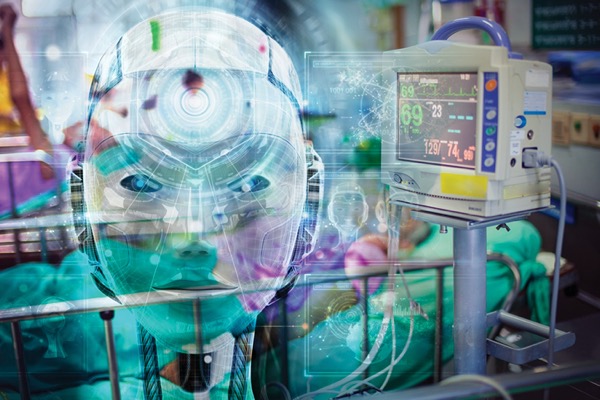From complex intraoperative decision support to the automation of robotic tasks, artificial intelligence (AI) may have the potential to forever change the face of modern surgical practice, but the road ahead is peppered with uncertainty.
In a panel session during the 2021 virtual American College of Surgeons Clinical Congress, a trio of clinicians discussed the promise and pitfalls of AI, along with its potential future directions.
Regarding the potential benefits of AI, Elsie G. Ross, MD, explained that each technique used in surgery has its own advantages and disadvantages. However, advances in AI could help remove many of the barriers and challenges currently faced by surgical procedures. Dr. Ross is an assistant professor of surgery and medicine at Stanford University in California.
Among these issues, Dr. Ross said, is the electronic health record (EHR). Developed primarily for billing, EHR has since been adapted for other purposes and has become very annoying over time. In fact, according to one study (J Surg Educ 2020; 77 [6]: e237e244), residents spent almost eight months of five years of training on the EHR.
The COVID19 pandemic has exposed many vulnerabilities in the medical system that were previously unnoticed by many institutions. There is also a significant loss of learning opportunities for operating room residents. Finally, surgical practice is challenged by the increasing complexity of patients and cases, both in emergencies and selective cases.
The prospect of such a challenge can be daunting for many, but Dr. Ross that AI may deal with each. For EHR, natural language processing (NLP) algorithms can be used to improve the efficiency of documentation, coding, and billing.
“Adding AI requires a complete rethinking of the tedious EHR charting, documentation and ordering process,” said Dr. Ross. “Suddenly, electronic health records are no longer a burden and can increase productivity with automatic transcription that records conversations about patient visits and converts them into appropriate note formats.”
AI can also play a role in patient care, Dr. Ross added, particularly by transforming risk stratification into action that both improves outcomes and saves costs for healthcare institutions. Among the studies she cited, Dr. Ross discussed one (J Surg Res 2020;254:408-416), in which an AI deep learning model retrospectively identified opportunities to decrease surgical site infection rates and costs following vascular surgery, compared with a subjective practice strategy.
“Another area where AI can be useful is to support diagnostics,” said Dr. Ma.
Research in this area explores the potential benefits of real-time AI analysis of endoscopic images. One study (Gastrointest Endosc 2020; 92 [4]: 905911.e1) demonstrated the potential cost benefits of machine learning algorithms to characterize polyps and predict the likelihood of malignant tumors. Finally, Dr. Ross foresees a time when AI can play a significant role in physician education, particularly in enabling practice outside the operating room.
“Regardless of all of the burdens thrust upon us through our imperfect device, AI is poised to lessen administrative strains, enhance affected person results and increase surgical training,” Dr. Ross concluded. “We have a protracted manner to move closer to developing, checking out and integrating those structures into our ordinary lives, however I suspect our small wins will sooner or later snowball right into a higher device in due time.”
Rachael A. Callcut, MD, MSPH, a professor of surgical operation at UC (University of California) Davis Health, in Sacramento, took the opposing viewpoint, selecting as a substitute to consciousness at the feasible pitfalls of AI in cutting-edge surgical practice.
Dr. Kallkat says the biggest concern is that, of the 2,048 papers published in 2021, only two were randomized controlled trials, despite the explosive growth of AI-related research in surgery. However, while most surgeons are already using AI in practice, it goes unnoticed because in most cases they tend to solve problems related to efficiency and predictive resource requirements.
However, despite this widespread use, most AIs used in medicine today are untested, potentially ignoring racial, clinical and geographic differences.
- Explainable: conveys the relative importance of features in determining outputs
- Dynamic: captures temporal changes in physiologic signals and clinical events
- Precise: data frequency matches physiology; architecture is aptly complex
- Autonomous: executes without time-consuming manual data entry
- Fair: evaluates and mitigates implicit bias and social inequity
- Reproducible: validated externally and prospectively, shared with research communities
“Current surgical care is minimally stimulated via way of means of artificial intelligence,” Dr. Loftus noted. “But as artificial intelligence packages enhance over time, this have an effect on is poised to increase. Furthermore, automation of programmable obligations might also additionally permit surgeons to spend much less time accumulating and reading data, and greater time interacting with sufferers and getting to pressing and essential factors of affected person care.




